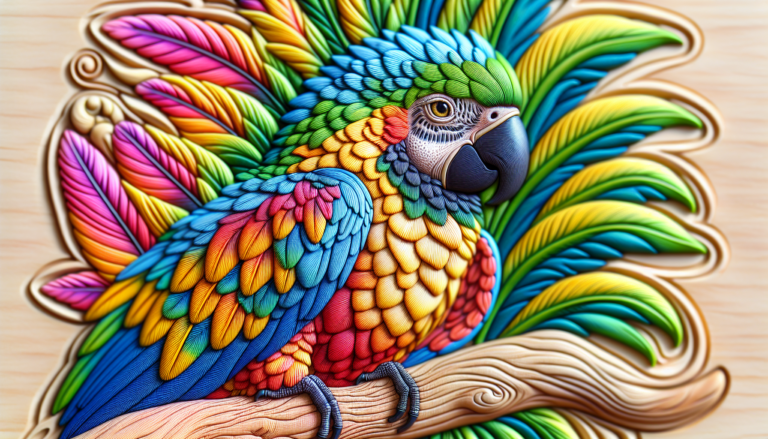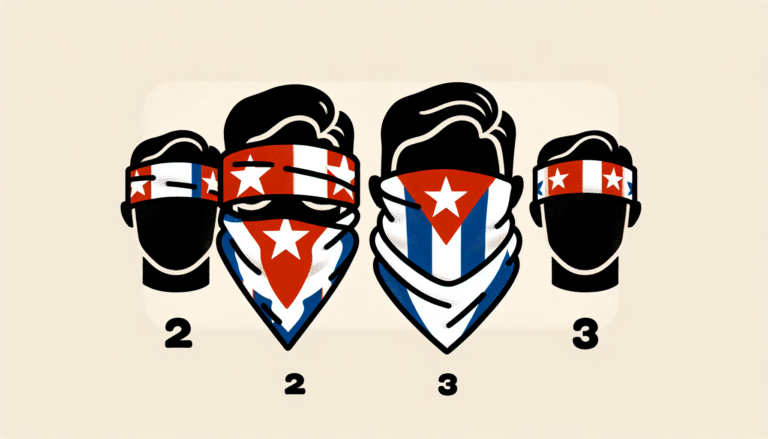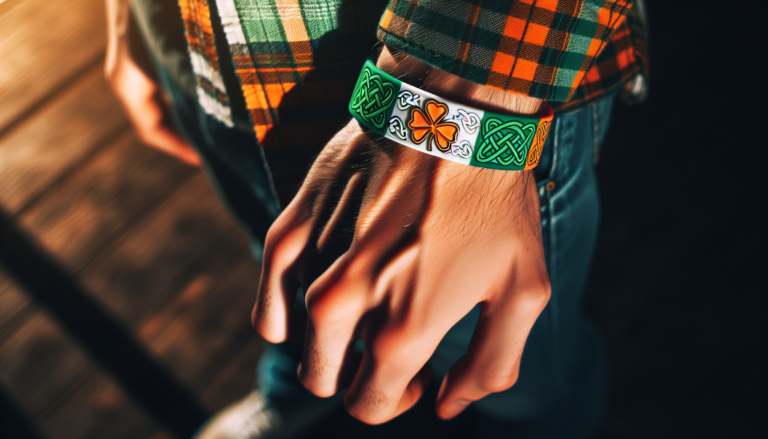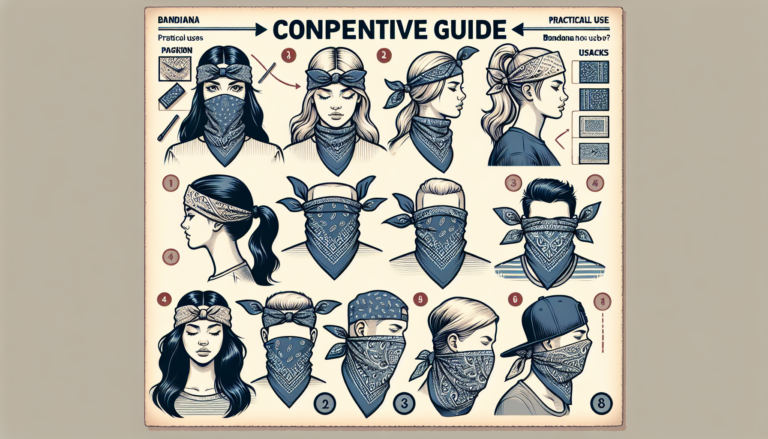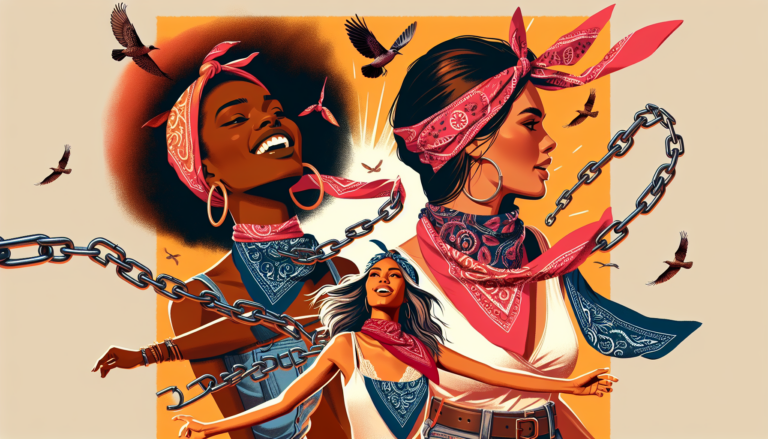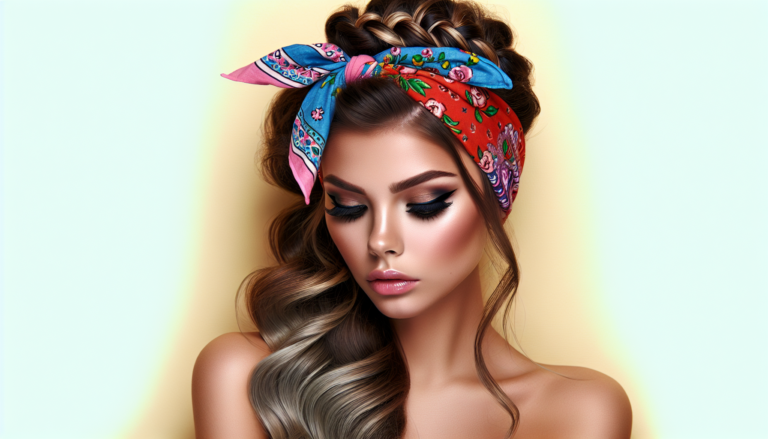There is probably no other garment or clothing accessory as American as the humble bandana. In fact, it could probably supplant apple pie as the quintessential, iconic American object.
One good reason for this (although many people aren’t aware of it) is that bandanas have played a fairly major role in our history – and even in the founding of our nation.
Consider, for example, the bandana Martha Washington had made for George Washington, the newly appointed Commander of the Continental Army in 1775, as an act of defiance against the British ban on printing.
The bandana Martha commissioned sported a likeness of General Washington with military flags and canons. And this bandana became a rallying point in our struggle for independence, with replicas soon being reproduced and distributed. “ By the summer of 1776, Patriots across the Colonies that had become states were cheering at the sight of Washington’s bandana. . . . Washington’s was the very first military-themed, hope-inspiring, American souvenir bandana.”
Bet you didn’t know that. But what we’re sure you do know is that cowboys and bandanas have been closely linked for a very long time.
Let’s see why.
(The above and what follows are adapted from our book The American Bandana Story, available on Amazon as well as Apple and B&N).)
How the Cowboy Bandana Got Started

Did you ever see an old-time, traditional cowboy who didn’t have a bandana around his neck – either in real life or in the movies? Probably not. Here’s how this cowboy bandana phenomenon got started . . .
Shortly after the Civil War ended, the great cattle drives commenced.
All those ex-soldiers were suddenly out of job and needed work. And people back East in the civilized world wanted beef steak. It only made sense, then, to drive herds of cattle – which had multiplied in Texas after being left to their own devices throughout the Civil War – to towns and cities with major railheads where the cattle could be loaded onto trains and then shipped to those markets with the hungry consumers.
“A drive would typically begin in late spring or early summer in order to reach the destination while the cattle had grass to eat along the way and before winter weather set in. The herds were trailed from the ranches – at this time, often deep in Texas – to the now-legendary railroad towns like Abilene, Wichita, and Dodge City. A herd of two to three thousand cattle would typically travel around 15 to 20 miles per day, which made for a weeks-long and sometimes months-long drive.
“At the destination, the cattle were driven right along the streets to the pens near the rail station, and large crowds often gathered to watch this dusty spectacle. Local saloon and other “entertainment business” proprietors were definitely pleased by the occurrence. After a couple of months on the trail, the cowboys, after dusting off their hats and donning clean bandanas, were ready to blow off a little steam and spend the money they’d just been paid at the end of the drive. But at the cowboy rate of pay of about a dollar a day, they were soon broke again and so had go in search of another cowboying job.
“One of the most famous of these cattle-drive routes was the Chisolm Trail. It began in South Texas, ran north across the Red River, stretched across Indian Territory (Oklahoma), and ended at the small frontier town of Abilene, Kansas. It ran across almost a thousand miles of wild only slightly tamed country, most of it hot and dry and very dusty.”
It was that dust that made bandanas so critical for those tough, half-civilized cowboys.
Cowboy Bandanas and Dust

On a cattle drive, the cowboys were divided into definite classes and assigned to jobs according to experience and demonstrated skill. The best of them would get the enviable and coveted job of “riding point. This means they would ride “at the front of the herd, slightly to each side, drawing the cattle along and directing them to the next watering hole, river crossing, or campsite. It was a point of pride to be ‘pointing the herd.’”
Next lower on the cowboy totem pole were those who rode “flanking” the herd. Their job was to keep the cattle (which were often more than half wild) from spreading out laterally and drifting/running off.
The lowest class of cowboys got the worst of the jobs. They “would be assigned the task of ‘riding the drags.’ They rode in the rear of the herd, pushing the cattle along, keeping them from stopping and simply grazing.”
And that spot at the rear of the herd, behind 12,000 hooves kicking up dust, was an extremely dusty, choking place to be. (For an authentic cinematic experience of what this was like, just watch the movie Lonesome Dove. It captures well Larry McMurtry’s portrayal of the danger and discomfort of a cattle drive in his novel of the same name.)
That’s why these cowboys bringing up the rear wore bandanas. They “would pull those bandanas up over their noses, just like the bank robbers, to filter out some of that dust so they could breathe. In some situations, without the bandana, suffocation would have been a real danger.”
“That square, often red, piece of silk, cotton, or (sometimes) linen could literally save a cowboy’s life on a long, dusty drive.”
This is, of course, the real reason why early cowboys always had a bandana around their neck. This tradition, though, carried on long past the relatively brief period of cattle drives.
Cowboy Bandanas and Movies

We love our Western heritage, and that’s why The western remains a popular movie genre even today. (Think the Cohen brothers’ excellent 2010 re-make of True Grit.) And the cowboy bandana is as ubiquitous in westerns as it was in the cattle drives of the nineteenth century.
“The tradition of cowboys and bandanas carried right on into the twentieth century, which is particularly evident in western movies. Just think of, say, Roy Rogers or John Wayne – you seldom saw either of them without a bandana around his neck. But the silent film era (not really all that far removed in time from the cattle-drive era) is where you can really see it.
“Consider silent-film star Tom Mix, known for making breathtaking leaps onto his horse. Mix always wore his signature bandana, which also became a major marketing tool. Kids would plow through bowls and bowls of cereal to become a member of the ‘Straight Shooter Club’ – and maybe win a prize like an autographed bandana.”
Cowboys and bandanas . . . that’s about as American as it can get.
Quality, Affordable Bandanas

Want to get in on this longstanding American bandana tradition?
Then you might as well go to the bandana source that offers both quality products and great prices coupled with superior customer service – Bandana.com.
Here at Bandana.com, we offer a wide selection of all kinds of bandanas, including flag bandanas and pet bandanas. You can get more information about us here.
